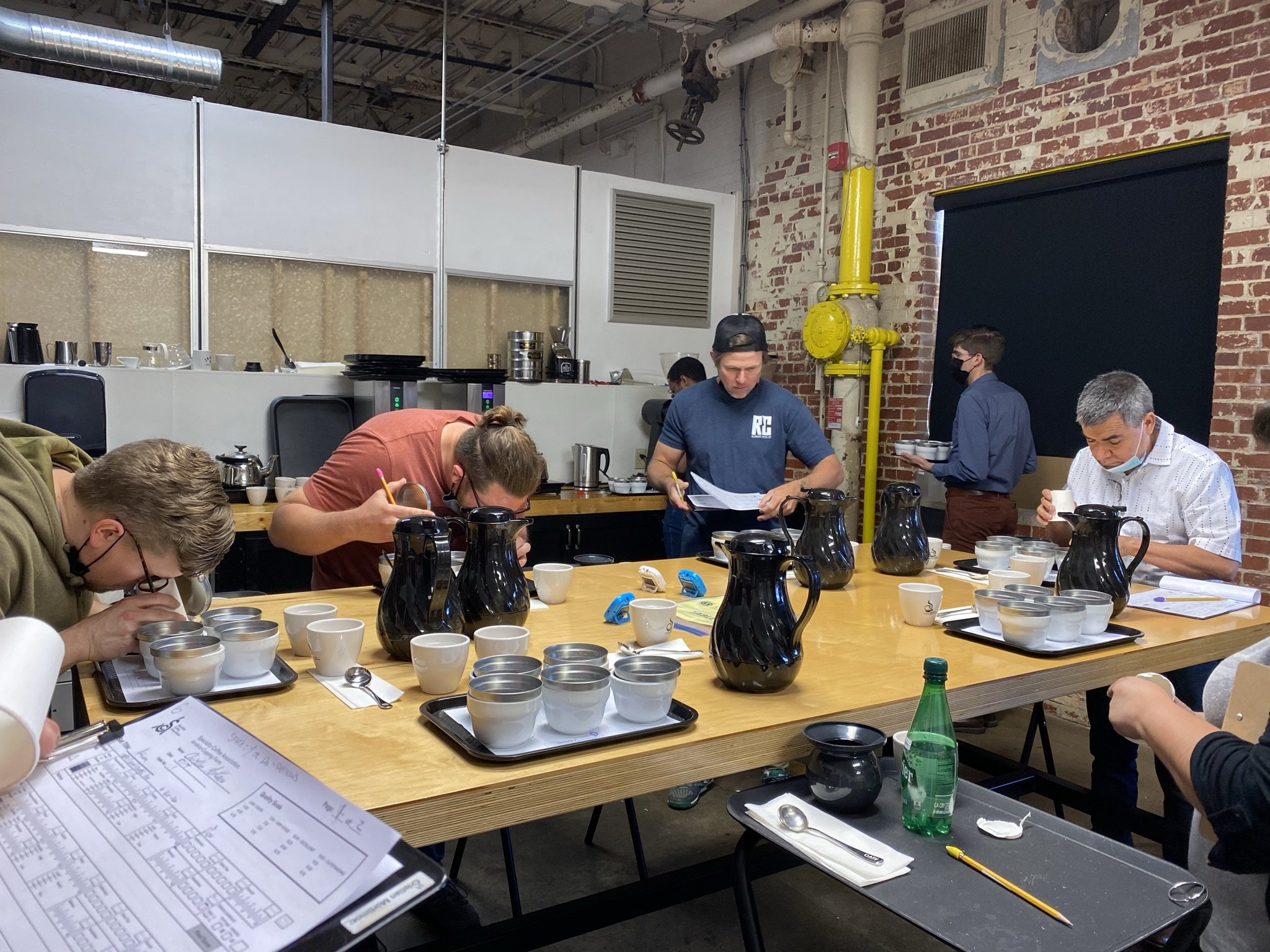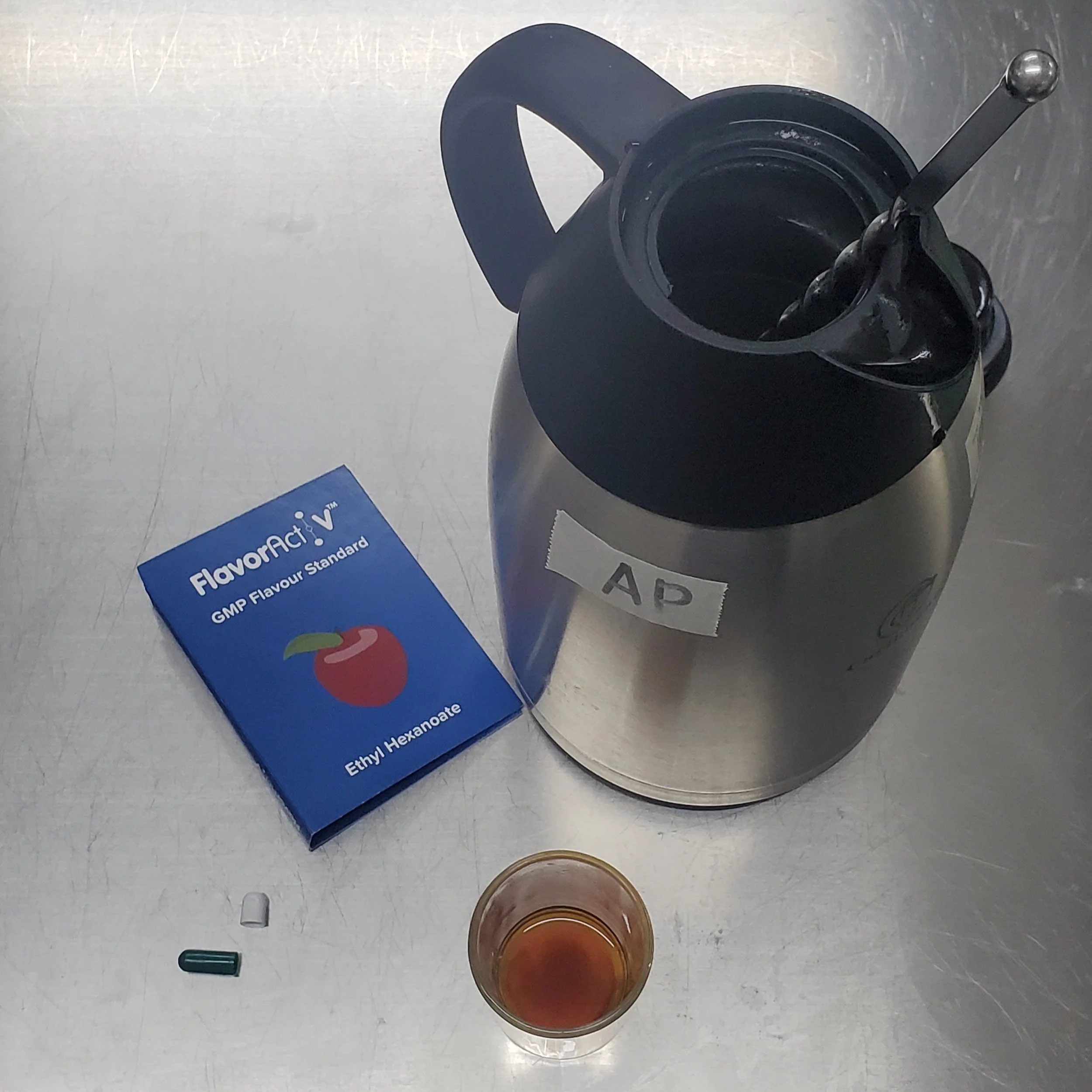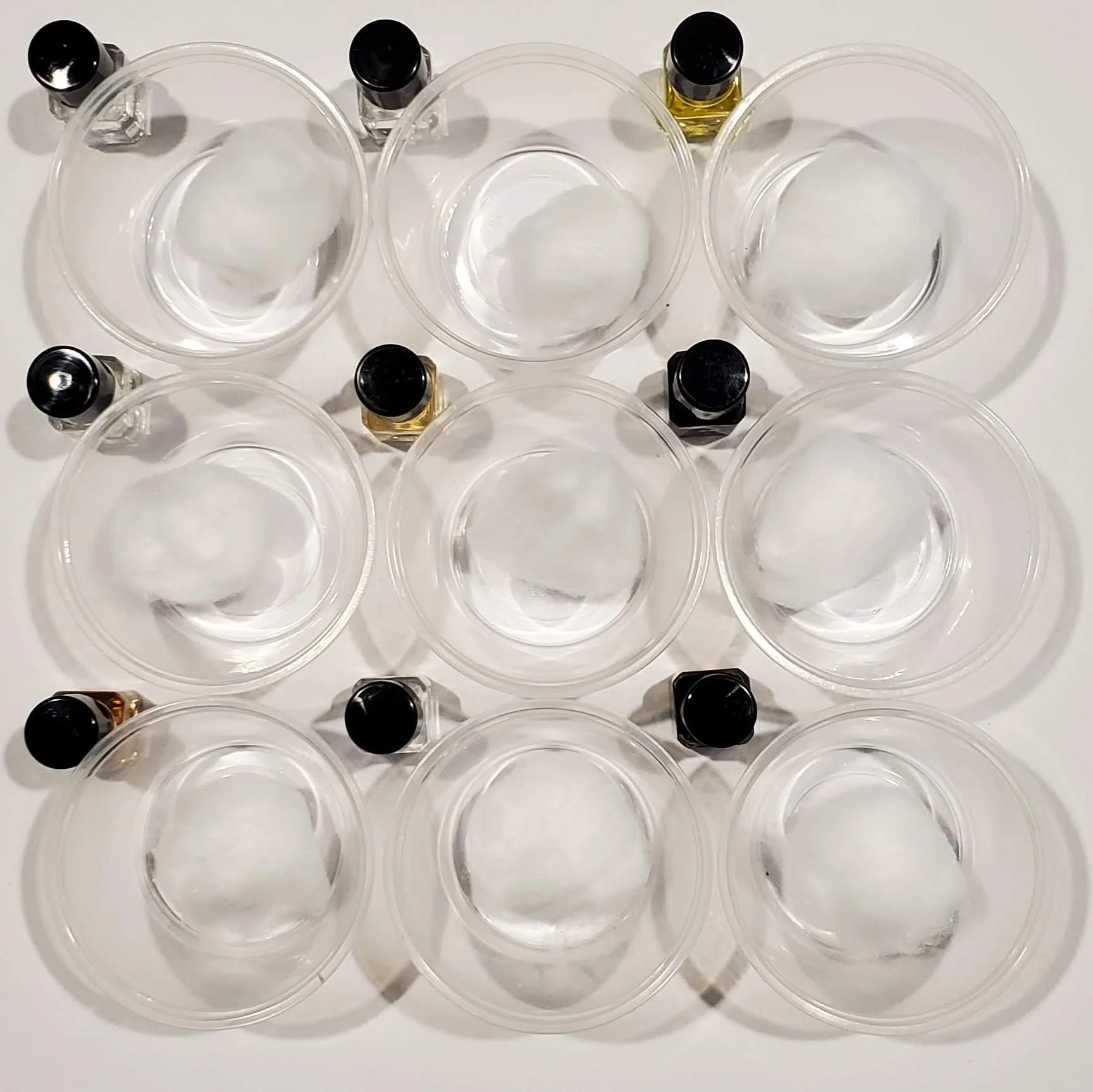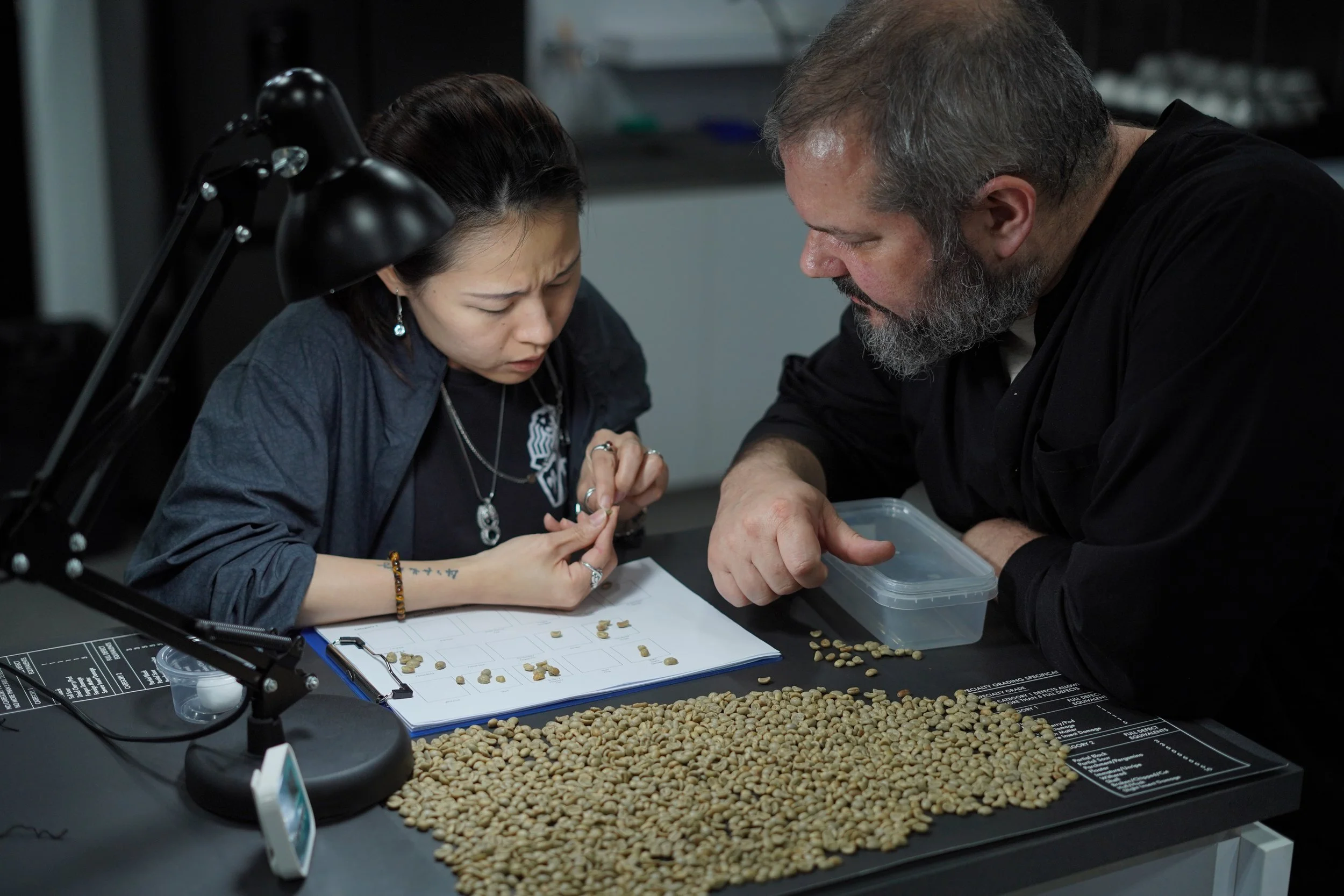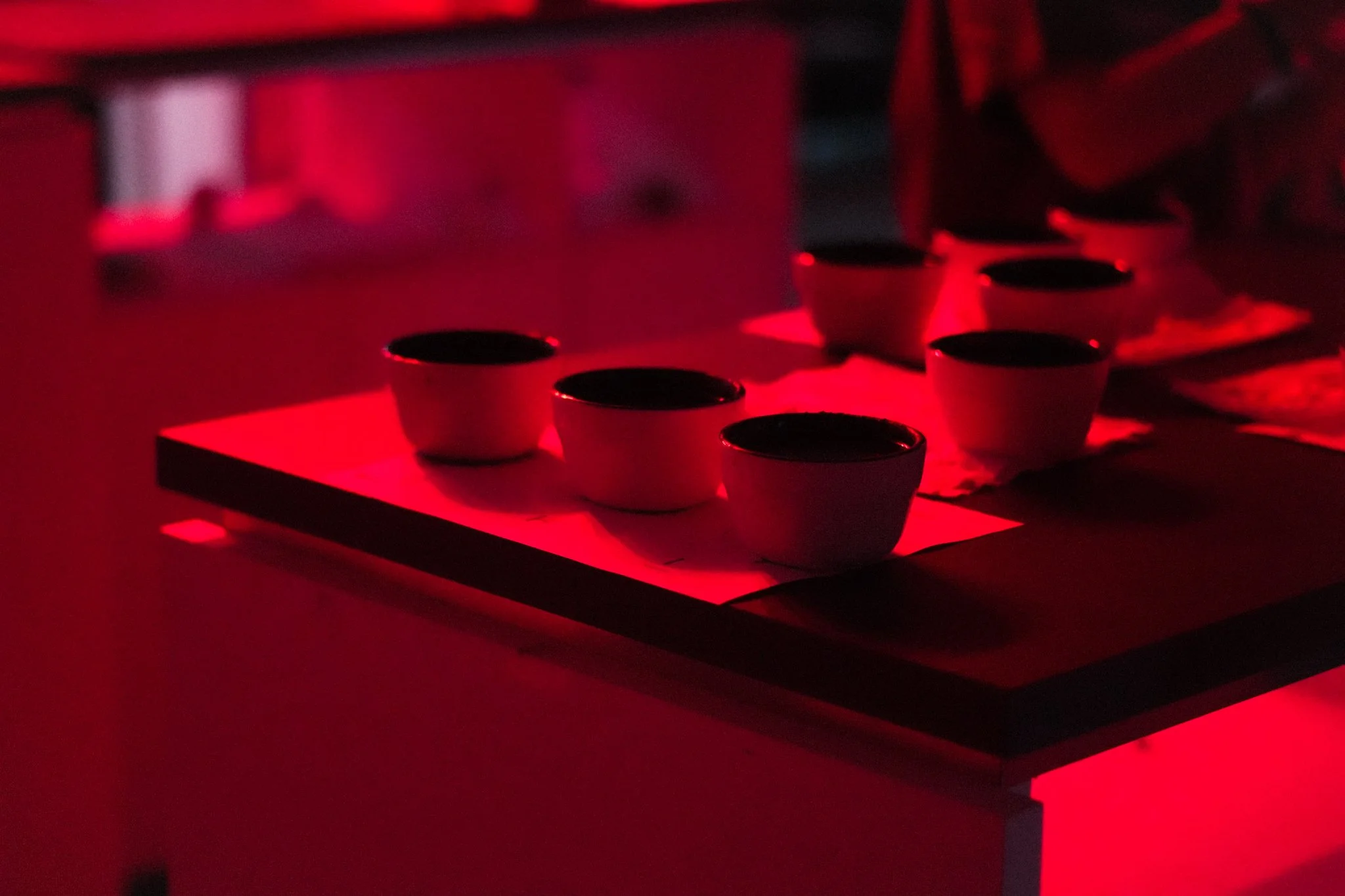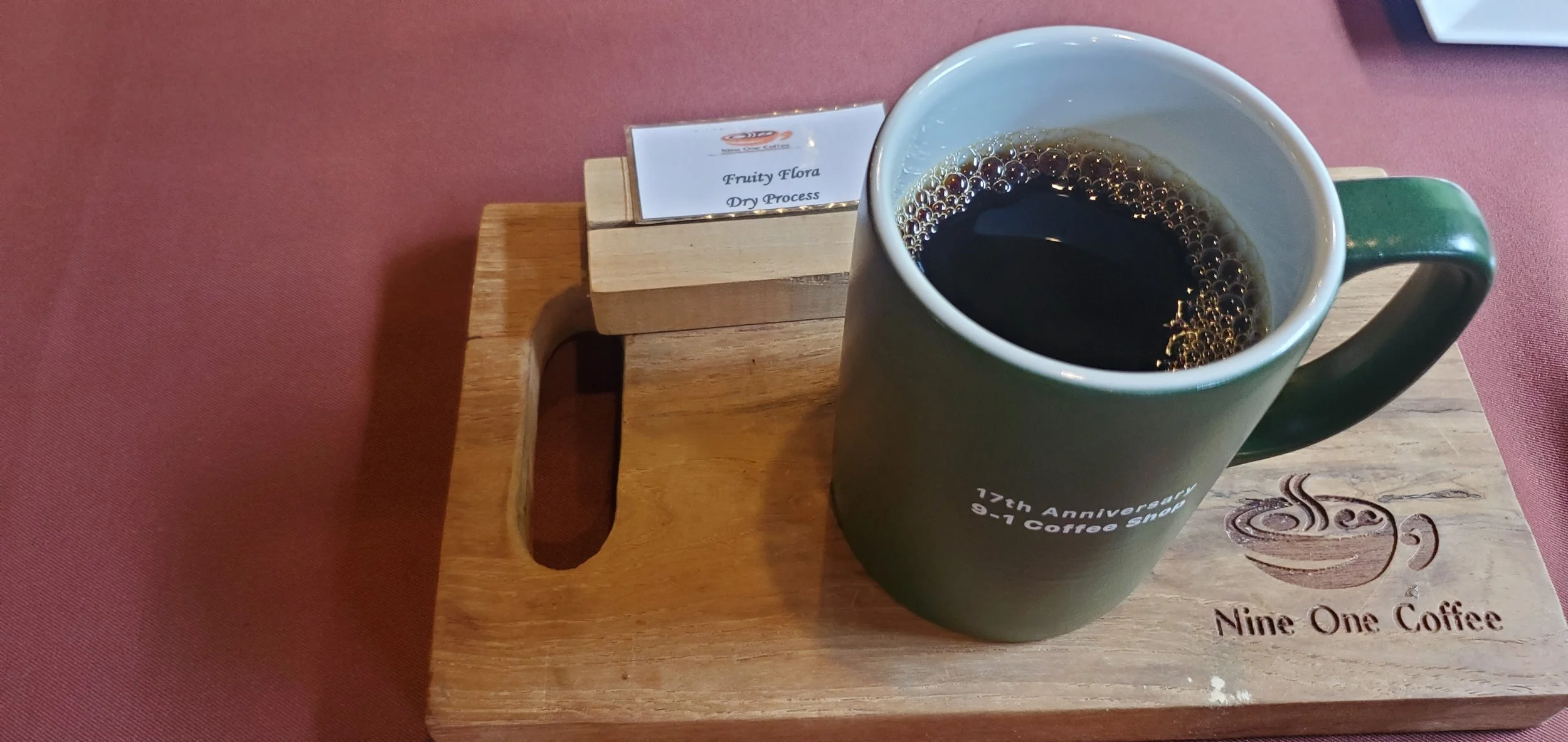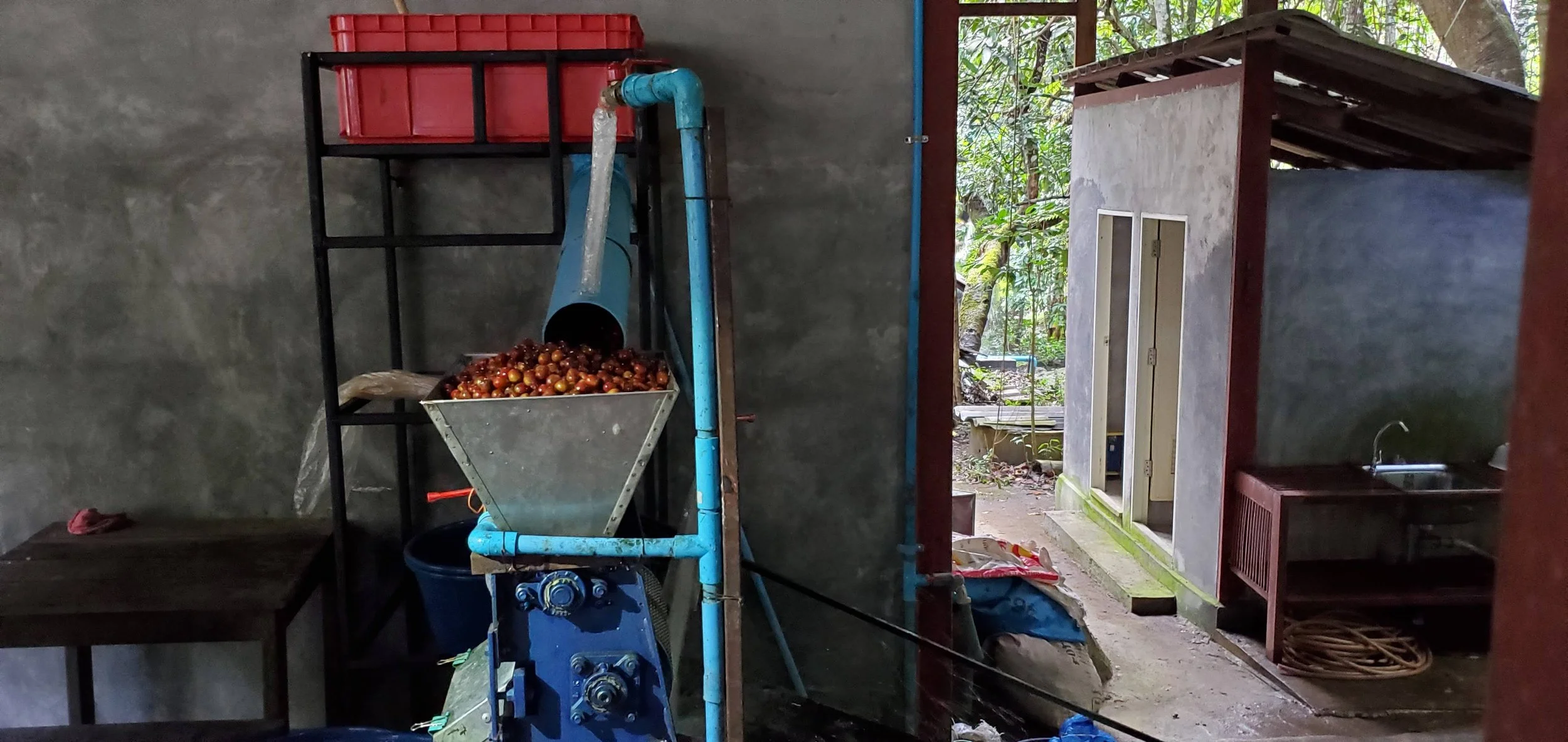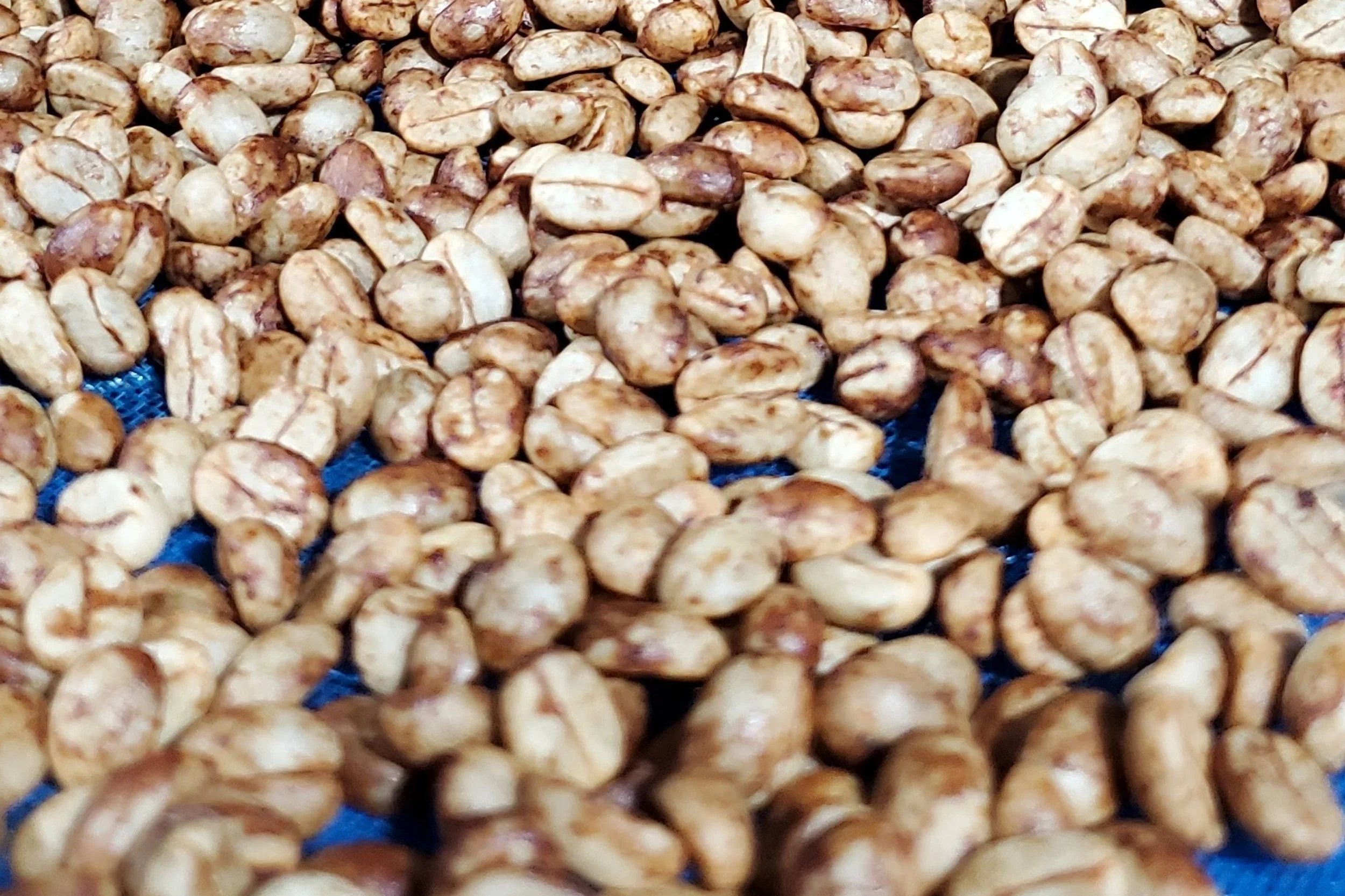Important Update: Changes to CQI and SCA Programs
The Q Grader course has been acquired by SCA. Read more about the change and how we are trying to adapt, here.
We want to address the recent changes announced by the Specialty Coffee Association (SCA) and Coffee Quality Institute (CQI) on Thursday and over the weekend of April 25, 2025.
While we can’t speak to the motivations or methods behind these changes—or how they were communicated—we recognize that the rollout has caused confusion and frustration. Like many of you, we feel let down, angry, and disappointed by how this transition was handled. Our goal now is to provide you with clear, transparent information so you can make the best decision for your path forward.
What We Know (So Far)
Effective October 1st, 2025:
CQI will no longer own or administer the Quality Evaluation (QE) courses.
Ownership and delivery of these programs, including the Q Grader Program, will shift entirely to the SCA.
The SCA plans to launch a new version of the Q Grader Program, currently being referred to by the SCA as “Evolved Q,” starting in October.
It is still unclear whether other QE courses will continue to be offered or be discontinued.
Below is how each current course offering will be affected:
Course-by-Course Breakdown
• Understanding Tastes and Flavors
This is not a certificate course. All content remains relevant and valuable regardless of organizational changes.
• Intro to CQI Cupping
This course teaches the 2004 CQI Cupping Form, which will no longer be used by CQI, SCA, or in the Evolved Q.
However, if you're aiming to complete your Q Grader certification before the October deadline, this class remains a helpful preparation tool.
• Q Arabica/Robusta Grader Certification
CQI will continue issuing Q Grader licenses through September 2025.
If you want to learn and test using the 2004 Cupping Form—used for the past 20 years and still relevant in much of the industry—this course remains highly valuable.
Graduates will earn a CQI Q Grader License valid for three years.
Completion will also make you eligible for the “fast track” to SCA Q Certificate by taking the 2-day CVA for Cuppers course before the end of 2025.
• Q Grader Retakes
CQI and SCA will no longer offer retake extensions after September.
We are now scheduling additional Retake Days immediately following each Q Course through September.
We encourage all retakers to join us—we’ll do everything possible to accommodate your needs.
If you attend a Q Course with us, please allow flexibility in your return travel plans in case an extra cupping day is needed.
• Q Arabica/Robusta Calibration
Licensed Q Graders who calibrate before October 1st will retain a valid CQI license for three years from their calibration date.
Once that license expires, you’ll need to complete the full, new 6-day SCA Q course to maintain certification.
Fast Track to “Evolved Q”
We are offering multiple CVA for Cuppers courses throughout 2025—including online options—for current Q Graders who wish to transition into the new SCA framework.
Currently Scheduled CVA Courses:
May 24-May 25 @ Anthem, Kansas City
June 12–13 @ Royal NY, South Plainfield, NJ
July in Thailand
August 12–13 @ Royal NY, South Plainfield, NJ
September 5-6 @ Balzac Bros, Charleston, SC
We are also looking at a possible online event. Please email if interested.
If your organization has several Q Graders and would like to host a private, on-site course, we’re happy to travel to you. Please contact t@colabops.com to arrange details.
We're Here to Support You
We understand these changes may feel overwhelming. Please know that our team is committed to helping you navigate this transition and continue your coffee education with confidence.
If you have questions or need clarification, don’t hesitate to reach out.
Coffee Professionals in a Q Course
Coffee Professionals in Laos in the Q Course
Understanding Tastes and Flavors
Understanding Tastes and Flavors is one of the most excellent entry level one day sensory classes for people completely new to coffee or people who have yet to work in the sensory analysis or quality evaluation realm of coffee.
Understanding Tastes and Flavors is one of the most excellent entry level one day sensory classes for people completely new to coffee or people who have yet to work in the sensory analysis or quality evaluation realm of coffee.
People currently employed in coffee like Roasters, Machine Operators, Salespeople, Baristas, and Entrepreneurs looking to start their own coffee business all find benefit in this class.
Many individuals we’ve worked with over the years tell me they don’t understand how to describe coffee, they say they are bad at it, or that their weakest area is sensory. What we find is, those people aren’t bad at analyzing the tastes and flavors in the coffee, they just aren't comfortable or used to it.
Our culture doesn’t spend much time thinking about or describing the things we consume. If we discuss something food or beverage related, it’s usually in terms of good or bad – "I like it, I don’t like it”. Or, we might say a dish is too much or too little of something. It’s too salty, it’s not seasoned enough, it’s too spicy.
flavoractiv is used to spike a plain cold brew coffee with single flavors to aid in identification and recall.
When asked what additional classes individuals are interested in, Sensory is the number one answer. Another request we get all the time is for Q PREP class. Those of you who’ve asked will be happy to know that THIS IS A Q PREP CLASS! After completing this class, a person will have an increased understanding in completing the cupping form, specifically Flavor, Aftertaste, and Body
This class also isolates and explores our sense of taste – using solutions with individual tastes- sweet, sour, salty, and bitter with no associated smell, we can better understand these components of coffee. Usually when we eat or drink something sweet, it’s associated with the basic taste of sweet but also contains multiple aromatics and texture. For example, shortbread is sweet, but it is also buttery, caramelly, and crunchy. Or grapefruit has grapefruit and floral aromatics, but it also has sharp acidity and bitterness which can cause confusion between the two tastes. Taking the time to experience each taste on its own helps to clarify the tastes for the individual.
In addition to clarifying tastes, this class also gives individuals a chance to analyze the same coffee multiple times but each time with one flavor difference, for example an added strawberry flavor or a medicinal note. Doing this allows a person to focus on a single flavor and describe it rather than having to view the entire coffee in all its complexity and pick out all the flavor notes.
And finally, this class offers a chance to isolate some specific body terms like thick, syrupy, astringent, and spicy.
The first time we taught this course was during an ACDI/VOCA PhilCAFE project in the Philippines. We were chosen by the Coffee Quality Institute to deliver the course with Cherry Cruz and her excellent team at The Barista and Coffee Academy of Asia. This was a relatively new course offering by CQI during this time. We were excited to deliver this course and happy to see how clearly and simply the concepts of taste and flavor were broken down and received by the attendees.
The crew from this round of PhilCAFE training after tasting defects.
This is a great opportunity for coffee professionals who are interested in improving their palate with goals like increased confidence when describing coffee and improving cupping skills. We are looking forward to adding this to the offerings from CoLabOps at the Lab at Royal NY starting in May!
An Overview of the CQI’s Q Grader Course
An overview or explanation of the Q Grader Course from the Coffee Quality Institute as recapped by Q Arabica and Q Robusta Instructor Thomas Ameloot. Thomas takes you through each section that will be tested and provides ways you can practice for the Q at home. From red light triangles to cupping and organic acids, there's advice for everything Q.
*originially published on the Royal NY website blog
Q Grader Definition
The Coffee Quality Institute states, “Certified Q Graders are professionals skilled in sensory evaluation of green coffee..” Here I’m going to specifically discuss Q Graders for arabica (though most of the skills and information is the same or similar).
A Q Grader is an individual who has invested their time and energy in developing their skills in the quality evaluation of coffee. They have proven knowledge in various aspects of coffee. Some examples of that knowledge may include the development of acids in coffee, the classification of green defects, and the protocol for preparing a cupping.
A Q Grader has also been tested and verified to have the skills to evaluate coffees from various locations and processes using the SCA cupping form and protocol and to provide a score that is calibrated with their other Q Graders.
The Benefits of Being a Q Grader
There are many benefits of being a certified Q grader for coffee, here are just a few of the many benefits:
Validation
I’ve heard from many individuals how they have been doing the work of evaluating coffees, roasting, sourcing, etc. either alone or in an echo chamber. They come in with many of the skills but also with much self-doubt. Each test they pass can lift up their self-image and validate their months or years spent working on these skills.
Value
When a person becomes a Q Grader, they can include this certificate on their resume. Many companies look for this certification as proof of a persons skill level in the coffee industry. My first position as a Sensory Specialist came to me only after becoming a certified Q Grader. The company that hired me viewed this as a specific requirement for the position.
Calibration
A Q Grader becomes able to adjust their scoring to reach some consensus with a group of sensory evaluators. Once this skill is learned, it can be applied in many different ways. You can more easily be involved in other areas of the coffee industry. Like judging for the US Coffee Championships. I specifically have gone on to judge Brewer’s Cup and Coffee In Good Spirits, both of which involve different forms but still use the skill of calibration. Cup of Excellence would be another place to use this skill.
Instruction
After learning about the skills in Q and completing each of the tests, an individual can gain insight into how to share this knowledge with colleagues and coworkers. After completing their first calibration, a Q Grader can move into the role of Assistant Instructor, if accepted. You can read more about that process, here.
Exercise
My colleague Steven Pivalsky often compares the Q to going to the gym and working out. You exercise all these muscles. It’s hard work. Sometimes you find muscles you didn’t even know you had. When you are done, you are stronger.
Q Course Schedule
The schedule during a Q course may vary from below. Each course has individuals with different questions, backgrounds, and experiences. We may have a deeper focus on one section while another section may need less attention. If there are changes, we post the updated schedule each day.
Sample schedule of the Q Arabica Course
Analysis of Each Section of Q and How to Prepare
Below we will group the course by test type with a brief description of the test(s) followed by ways you can prepare.
FLAVOR
PRO TIP: For Flavor activities, in my experience, the most important thing you can do it to evaluate the flavor, taste, or smell without knowing what it is. And record your experience. What is happening to you, in your body, when you are exposed to each?
You may link a smell to a memory, or taste something and be reminded of a location, or drink something and feel the color yellow, or feel happy when you drink sweet... Tune into the cues your body provides AND THEN reveal what the item is. Chances are, next time you experience that item you will revisit that memory, color, feeling, etc and then your mind will link it to the name of that item.
Gustatory (Taste)
Tastes, or modalities as referred to in the course, include sweet, sour, salty, and bitter. We don’t currently use umami in this course.
In the first part of this test, you will have 12 samples. You will identify each of these individual tastes at a low, medium, and high intensity level.
You will also be presented with 9 samples of mixtures containing two tastes at one of the three intensity levels each, i.e. sweet medium intensity and sour low intensity. Finally, you will need to identify which two modalities are in each mixture and the intensity level of each modality present in each sample.
TO PRACTICE – Use white sugar, table salt, citric acid, and caffeine to represent sweet, salty, sour, and bitter respectively. You will need a scale and if you are using citric acid you may need the scale to go to the hundredth decimal – 0.00. If you don’t have this, you can prepare a stronger solution of citric acid and water and use this to add to the water.
When I prepared for this section, I purchased a case of quart Ball jars.
Coincidently, citric acid is usually located with the Ball jars at your local hardware store.
Fill the ball jar or some other vessel with a set amount of water. For ball jars I used 1/2 liter. Slowly weigh and add an amount of a single taste, stir, and taste – until that taste is recognizable by you. Once you can recognize a taste, that amount is your level 1 or low amount. Now double that weight for medium and triple it for high intensity levels.
Once you can recognize and recall each modality at each intensity, move on to mixtures. Randomly add two modalities of the same or different intensities to a single ball jar. Mix these up and practice recalling the tastes. tastes affect each other in your perception.
Olfactory (Aroma)
For this test we use the scents from a tool called the nose of coffee or Le Nez du Café Revelation kit. The kit is further arranged into four categories: enzymatic, sugar browning, dry distillation, and aromatic taints.
Develop aromatic recognition by matching two bottles of the same aroma from a specific aromatic group.
Develop aromatic recall by naming individual aromatics.
TO PRACTICE- you can review which aromatics belong to each category. A google search of “le nez du café categories” or “the art of aroma perception in coffee” will give you the information. You don’t need a kit to do this.
If you have access to a kit, maybe borrowed from a friend , work to identify the smells with your eyes closed.
Another suggestion is to eat the items on the le Nez du Café list that you are not familiar with and don’t often eat. Close your eyes and breath in exhale through your nose as you chew the item.
Flavor (Taste+Aroma)
Flavor is a combination of taste and aroma, among other things.
In this test, you must recall 6 random flavor standards from FlavorActiV. We present seven POSITIVE and seven NEGATIVE flavors during practice.
TO PRACTICE- you can place a few drops of a flavor extract or other invisible flavoring agent like essential oil (read the company oil info to make sure they are safe for consumption) into water. Mix them up and try to identify each one.
You can also purchase the flavoractiv kits and practice. They have a sale on 12 of the 14 flavors used and they can be purchased on the flavoractiv site. You will need to set up an account.
https://www.flavoractiv.com/product/coffee-defects-attributes-starter-multi-kit/
GREEN QUALITY
Green Defect Identification
Identifying Primary and Secondary Green Coffee Defects using the SCAA Arabica Green Coffee Handbook
TO PRACTICE – read the handbook.
Set a timer for 10 minutes and remove all the defects from a 350 gram sample of green coffee.
In 5 minutes, use the book to name and categorize the defects.
Use this form to add up the number of each defect found then do the conversions. For example, 10 slight insect damaged beans = 1 category 2 defect.
Thomas coaching student Noon on identifying a defect.
Roast Defect Identification
Detect any “quakers” in a sample (100 grams of roasted coffee). A quaker is a coffee bean that has much less browning in the roast process resulting in a lighter color.
PRACTICE NOT NECESSARY
CUPPING
In the Q, we cup four total tables of coffees, each table from one of four categories: milds (washed), natural/honey processed, Africa, and Asia following the SCA Cupping Protocols. Each table features six coffees. We spend extensive time explaining and reviewing each attribute on the cupping form.
In the Q, we cup four total tables of coffees, each table from one of four categories: milds (washed), natural/honey processed, Africa, and Asia following the SCA Cupping Protocols. Each table features six coffees. We spend extensive time explaining and reviewing each attribute on the cupping form.
TO PRACTICE – Read and study the Protocol and use it to prepare and practice cuppings with coffees from different processes and locations. Ideally this would be done with one or more experienced coffee cuppers. You may find public cuppings local to you or find services online.
Student Bruna cleaning cups during a cupping.
TRIANGLES
A Triangle is a sensory test that establishes if two items are different, in this case two coffees. In the Q, there are four triangle tests, one for each table category, i.e. Africa. Each test has 6 “triads” or sets of 3 cups. Two cups are the same, one is different. The test takes place in a room with red lights to minimize visual differences.
TO PRACTICE – Find two coffees that are similar but have something different about them. Mark the bottom of the cupping bowl that contains the different cup and mix up the cups. Identify which is different and repeat. You will prepare the cups similar to the cupping protocol but make sure the coffee is not visibly different. If it is, try turning the light off or doing the exercise in a dark place.
Cups set in red lights for a triangle
ACIDS IN COFFEE
There are many acids in coffee. In the Q we explore four; citric, malic, acetic, and phosphoric. We use an exercise called “matching pairs” to test for the ability to differentiate, recognize, and recall the acids. Eight sets of four cups each is laid out. Each set has two cups of plain coffee and two cups of coffee spiked to the same intensity level with one acid type.
TO PRACTICE – Citric acid is available in the canning section of your local hardware store. If you purchased the citric acid you can use that to spike cups. If you’d like to explore the other acids you can purchase those online or at beer brewing supply stores.
Brew a coffee that has low acidity and brew it at weak strength.
Pour four cupping bowls, mark the bottom of two of the bowls and add a small amount of acid to those. Just enough that you can taste a difference between the other two bowl which contain just plain coffee. Move the bowls around and work to differentiate the two bowls with acid.
If you have purchased all the acids, you can practice spiking the coffee with each and identifying them from each other.
SAMPLE ROAST ID
We follow the protocol to roast coffee to SCA sample roast specifications. We then compare coffees that have been roasted incorrectly – over roasted, under roasted, and baked (roasted at a lower time and/or slower temperature but to the same roast color).
TO PRACTICE – If you have access to green and a roaster, roast a coffee to specification and then over, under, and baked.
Prepare two cups of the sample roast and each incorrect roast using the protocol.
Use the prepared cups to make triangles and practice finding the different cup and identifying which roast the different cup is.
GENERAL KNOWLEDGE
This test reviews various aspects of general knowledge including the SCA cupping protocol and triangle preparation, coffee acids, green grading, roasting, brewing, the cupping form, the basics of how taste and smell work, coffee processing, and global production, etc.
TO PRACTICE just read up on the basics of these things. Most of them will be reviewed in the course.
We’re 3 weeks out from the Q Grader Certification class, can you provide a recommendation preparation timeline? What should attendees do each day leading up to the course to best prepare?
Try cupping with experienced cuppers using the SCA Cupping Form at least a few times. Practice with different quality levels of coffee and coffee from different regions of the world – especially coffees you may not be familiar with.
My History with Q Courses and why should students be excited about signing up for my class?
I started as an Assistant Instructor of the Q in March of 2020 in Addis Ababa, Ethiopia. I became a Q Instructor in August of 2021. Since then, I have led 13 Q Courses and a total of 31 CQI courses in many locations including USA, Thailand, Laos, England, and the Philippines.
My journey as an Instructor started back in 2010 when I was promoted to a training role with Green Mountain Coffee Roasters and fell in love with adult learning theory and communication. From then I started volunteering with the SCA and taught my first course on Organic Acids at my first Roaster’s Guild Retreat in 2013. Shortly after that I became the Vice Chair and then the Chair of the SCAA Sensory Education Committee and an AST with the SCAA. I’ve loved bringing education to people ever since.
My commitment is to ensuring each participant in each course leaves the course with a deeper understanding of their senses as they relate to coffee. Even if they don’t pass the Q on their first try, they all leave with the skills needed to do so and just need a bit more practice.
TCE - Thailand Best Coffee Beans Competition 2024
Read all about CoLabOps' adventures in Thailand. This time we were honored to help lead the TCE Thailand Best Coffee Beans Competition. This was in conjunction with Bolliger and Co and Big Black Box.
We were invited to help lead this Thai coffee competition - TCE 2024 “Thailand Best Coffee Beans” to compete for the Her Royal Highness Princess Maha Chakri Sirindhorn Cup. The beans were judged in four categories - natural, washed, honey, and robusta. The total prize money for all categories is over 700,000 baht. It was an unbelieveable position we found ourselves in.
The competition was open to Thai Coffee Farmers. And they turned up! Check out Thomas’ video welcoming farmers to join the competition. https://youtu.be/SsHpsc3FftQ?si=0wlvFgTvngy6V0MV
Opening ceremony for the competition.
Check out the details and rules of the new contest on the Facebook page: TCE 2024 Thailand Best Coffee Beans, the best Thai coffee contest.
Our partners and gracious hosts at Big Black Box shared the brand new lab at their Dry mill in Nonthanburi as our evaluation headquarters.
After many days roasting and evaluting samples from farmers all over Thailand, we were absolutely delighted by the results. Many farmers from our other project, Q Project Thailand were winners here.
Kluay from Cafe de Hmong took 1st in Washed. Not surprised as the coffees there are Amazing! We've never seen a coffee farm like his.
Ms. Jaree Manop from Krabi took 2nd place in Robusta.
We were brought in to help elevate the competition to a higher standard. Stevyn was the Lead Roaster for the competition and Thomas led the International Judges Panel where Stevyn joined as a Judge. With help from the Head Judge of the National Competition - Werawit Noon of Baristaneer, DP Wu from Torch in China, and Victor Bas from Curve in the Philipines, we had an excellent and diverse team to analyse the coffees submitted.
Steven analyzing roast information.
We evaluated 70 coffees/350 cups tasted and were really so thankful and happy for the quality of coffees.
Stevyn says, “After spending two years regularly tasting Thai coffees, it’s been incredibly satifying and surprising (and also not surprising) the level of quality these farmers are producing. It’s not surprising because we know these Thai farmers have the ability. It’s been really nice that we’ve been able to taste this level of quality.”
The cherry on top was getting a chance to taste and share these coffees at the Thailand Coffee Fest with Big Black Box and the CEO of CQI, Michael Sheridan! Huge thank you to Bolliger and Co for their tireless efforts in organizing all of this!
Michael Sheridan, CEO of CQI tasting the TCE Best Coffee Beans at Big Black Box booth in the Thailand Coffee Fest 2024
Thomas tasting the TCE Best Coffee Beans at Big Black Box booth in the Thailand Coffee Fest 2024.
Flavor Wheel and the Sensory Lexicon
Besides being a go-to guide for what you are likely to find when you are sipping and slurping, the Flavor Wheel is also categorized in a way that novice tasters can use to explore from broad flavors in the middle to gradually more specific as you work your way out. Does the coffee taste fruity? What kind of fruit? A Berry? What kind of berry? Blueberry! The same can be done with any of nine broad categories working your way to more and more specific flavors as you develop your sensory skills.
Here at CoLabOps we teach Barista, we teach Roasting, we teach Brewing, but the one thing that we teach that runs through all of these is: We Teach Sensory!
Sensory is the common thread with all the coffee skills that we teach because if we haven’t honed our palate, if we don’t know how to taste critically, honestly, and in an organized manner then it’s almost impossible to find the flavors and executions we are looking for in our coffees.
Fortunately for us, many intelligent & organized people have done a lot of work ahead of us to make our lives easier. One of the most powerful tools these palate pioneers have bequeathed is the SCA Coffee Taster’s Flavor Wheel.
Initially launched in 1995 and evolved to its current state in 2016, the Flavor Wheel is your one-stop shop for commonly agreed upon attributes that can be found in specialty coffee, observed in the U.S.
Besides being a go-to guide for what you are likely to find when you are sipping and slurping, the Flavor Wheel is also categorized in a way that novice tasters can use to explore from broad flavors in the middle to gradually more specific as you work your way out. Does the coffee taste fruity? What kind of fruit? A Berry? What kind of berry? Blueberry! The same can be done with any of nine broad categories working your way to more and more specific flavors as you develop your sensory skills.
From the WCR Sensory Lexicon - The Blueberry reference is the slightly dark, fruity, sweet, slightly sour, musty, dusty, floral aromatic associated with blueberry. These definitions are one of the great advantages of using this tool. Check out this Instagram page for a nice reference.
But how do we define these flavors?
The World Coffee Research organization had the same question and worked with The Sensory Analysis Center at Kansas State University and thus was born the Sensory Lexicon. The Lexicon is a comprehensive list of 110 flavors, textures, and aromas present in coffee with specific and easily obtainable references (in the US, anyway).
The flavor wheel as a tool, however efficient and organized it is, can be daunting, and this is why we love to take the time to acquire as many of these references as possible and create a tasting experience along with a cross section of coffees with similar attributes.
Our Exploring the flavor class will offer a chance to do just that, in a laid back and conversational environment with our skilled. team as well as a group of peers looking to dive into the world of sensory without needing to be a sommelier.
Workshop held at Bluekoff Thailand
It’s all in the process.
In coffee, what does the process have to do with anything?
Raised drying beds and a green house at Nine One Organic Coffee Farm on Doi Saket, Chiang Mai, Thailand
In coffeeworld, we use the term “Process” to describe various methods by which harvested fruit from a coffee plant is further transformed into the GREEN seed that is either doomed OR destined to be further alchemized by our agents.
From seed to tree to cherry, pulped or dried , washed and fermented, dried and hulled, stacked by the hundreds into a metal cocoon and whisked across the globe. Once again they hatch from their burlap chrysalis and undergo yet another dance of changes, oscillating within flames where flavors both apparate and escape.
By Means of fire and various thermokinetic manipulations we coax these would-be trees into a potent potentiality potion. A dark pool, resting and whispering steam into the skies, that has discernable characteristics beyond ”Coffee “ is the result of many intentional yet mysterious transformative moments..
A mug of freshly hand-brewed dry-processed coffee from Nine One Coffee.
The dance continues. Tumultuous relief when seeds we call “beans” are broken into 1,000,000 pieces by Zen like metal. A feast for olfaction. Those nearby know this smell and adore it, what was the name from that nose tickle? Oh yes COFFEE!
It doesn’t stop at that, from the soil of a far off land, one person with or without a plan has engaged in intentional manipulation, taking the time to slowly coax with the true nature of the seeds , the songs that they want to sing, harmonizing with the sun and the soil, a perfect red cherry plucked at it’s most resonant hue. When we slow down and take a moment to not just glug the dark movement mixture that baptizes our 9-5, but to sip the vivid harmony of that just So.
When we speak of process our agents tend to speak from a technical standpoint. They talk about a very specific stage of a coffee’s journey. The point at which a farmer, or a coven of farmers, or a benevolent tree god decides the flavor fate of the seed in question. Without further fermenting this thought I’d like to provide a brief overview of 3 of the most common methods for this fundamental aspect of a coffees actualization. All of which start with picking the ripest fruit from the tree.
Wet mill located at Nine One Farm uses the natural flow of the nearby river to operate the machine.
Washed Process-
aka wet, parchment dried
Fruit is removed by running the cherries through a wet mill, typically within 24 hours of harvest. Next, fermentation occurs in a tank for up to 72 hours. Various types of agitation and floating occur to remove seeds and other materials with less than ideal density (floaters) and to fully clean the surface of the GREEN coffee. Coffee is then sent to take a little nap and rest in parchment, a protective layer like a peanut shell, before it is ready to take its next adventure on it’s way to a roaster near you!
Check out our coffee from Nine One for sale here.
Attributes- Clean and Sweet/Floral and fruity/bright Citric or Malic Acidity
The man, the legend, Nine One with his washed coffee.
Natural Process-
aka dry, fruit-dried, the original process
Ripe Cherries are harvested and then spread upon either a patio or a raised bed which may result in a higher quality coffee. Coffees will dry for up to 30 days, with meticulous monitoring, movement, and management by the farm team. The dried fruit is hulled off when the ideal moisture level is reached, and much like it’s rub-a-dub buddy the washed coffee, it is sent to take a little slumber for up to 90 days before it begins it’s next adventure.
Attributes- Berries/Wine/Funky/Syrupy Body/Acetic Acidity
Honey-
aka pulp natural, mucilage dried, black/yellow/red honey
The coffee fruit is put through a wet mill where water runs over it and the mill squeezes the seeds out of the fruit. The fruit is separated from the seeds for compost. Through the flow of water in this process, varying levels of mucilage (sticky fruit layer) are allowed to remain on the seed and dry with it as it ferments. Different amounts of mucilage are usually given different names like black honey, red honey, and yellow honey.
Attributes-Fruity/Carmel/Stone Fruits/Smooth Body
Honey processed coffee fermenting with some of the sticky-fruit layer still attached.
Our roasted Coffees from Honduras were produced by the same Farmer on the same land and with the same varieties, the difference being purely in the process. If you are interested in learning more about how process can affects the flavor of coffee first hand check out our offerings from Juan Adolfo
Words from the mysterious cast of coffeeTRON
〰️
Words from the mysterious cast of coffeeTRON 〰️
ARTO- Processing is all about the farmers and the magic of the land, it’s the story they tell of their through a cherry and how it which is aligns with their hearts.
CYRUS- Coffee Processing is a fascinating technique through which farmers and mill operators practice scientific rigor in order to achieve specific results.
HOGAN- Farmers can and should achieve maximum profits by effective use of processing techniques and also growing high yielding high caffeine crops like Robusta! I love the extra caffeine Kick!
PHONIE- PROCESSING…
HOMEBODY-I don’t know much about coffee processing tbh, but I know that I like the way Natural process coffees Taste. Especially in my French press!
BIV- Coffee Farmers are Artistes! Processing is just another tool in their arsenal in which they can shape this world and create more aesthetic bliss.



